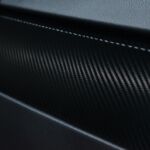The role of soft magnetic materials and Soft Magnetic Materials Market and their related devices (such as transformers, electric machines, and motors) in converting energy is often disregarded or overlooked. However, this is not the case. Operating power electronics, power is transformed between sources, storage, and the electrical grid in a bidirectional manner. Electric machines (motors and generators) convert mechanical energy into electrical energy, and vice versa.
With the advent of Wide Bandgap (WBG) semiconductors, power conversion electronics and motor controllers can operate at much higher frequencies. Consequently, this reduces the size requirements for passive components (inductors and capacitors) in power electronics and enables more efficient, high-speed electrical machines. Despite this, none of the soft magnetic materials available today can unlock the full potential of WBG-based devices.
Materials scientists and others have systematically introduced improved materials since iron was the only soft magnetic material available in the 1800s. A significant event in magnetic materials occurred in 1900 with the discovery of silicon steel (electrical).
Market database states that the material of choice for large-scale transformers and electrical machines is still silicon steel, which dominates the global market for soft magnets. Although its electrical resistance is low, eddy current losses are outstanding, operating frequencies increase. Therefore, the soft magnetic community needs to find other materials to meet the needs of newer high-frequency devices.
Several soft magnetic materials are promising for high-frequency applications. At present, amorphous and nano crystalline alloys, both developed in the 1970s and the 1980s, are the most advanced materials. Combined with ultra-thin laminations, their nanostructures work to contain eddy current losses at high frequencies. Nevertheless, fabricating parts by carving and stacking or binding extremely thin and fragile laminations can be challenging. In the field of soft magnetic, composites are powder cores or magnetic composites. The materials consist of micrometer-sized particles coated with an insulating binder and consolidated under high pressure. Despite their modest performance, their isotropic nature makes them well suited for use in rotating electrical machines.
According to the market database, researchers are becoming increasingly aware of the need for improved soft magnets capable of efficient operation at high frequencies. Some are working on improving existing materials, while others are exploring radical new approaches.
Additively Manufactured Soft Magnetic Materials
In-space electric propulsion operations are evolving in terms of interplanetary missions. Better manufacturing methods are needed to produce large diameter Hall-effect thrusters with equitable magnetic properties and structural robustness.
Enduring magnetic materials and production methods are inadequate for composing large-diameter Hall-effect thrusters (HETs) with sufficient mechanical strength while delivering the desired magnetic properties.
According to the market database, Cobalt-iron soft ferromagnetic alloys are desirable for soft magnetic applications, including Hall-effect thrusters, due to their unparalleled magnetic saturation, elevated permeability, high curie temperature, and extreme strength. Unfortunately, these alloys suffer technological issues due to low adaptability and the inability to produce such alloys in larger forms. In addition, Co-Fe soft magnetic production of large billets results in weak, fragile, and inhomogeneous materials.
Elementum 3D, in partnership with Altius Space Machines, is aiming to produce an Additive Manufacturing (AM) process and material feedstock. This will be suitable for the fabrication of large-diameter HETs from cobalt-iron-based magnetic material. The capability of AM to manufacture these large structures directly from powder feedstock would subdue the unavailability of adequately sized iron-cobalt billets. Other advantages include improved design freedom and an enhanced thrust-to-weight ratio.
Smart Soft Magnetic Materials to form Artificial Muscles
The European Research Council is financing a five-year project called Biomechanical Stimulation based on 4D Printed Magneto-Active Polymer (4D-BIOMAP). This research project is being addressed from a multidisciplinary perspective, comprising solid mechanics, bioengineering, and magnetism.
According to the market database, magneto-active polymers are revolutionizing the fields of solid mechanics and materials science. These composites consist of a polymeric matrix. They contain soft magnetic particles that react mechanically by changing their shape and volume. Hence, progressions to design a magneto-active structure for epithelial wound healing stimulation are in place.
Magnetic particles and polymeric matrix are materials properties that influence magneto-mechanical response. If controlled, other purposes could be generated, such as a new generation of artificial muscles or soft robots that can interact with the body. The soft magnetic materials market and its 10-year business outlook can be understood using Global Market Database.


